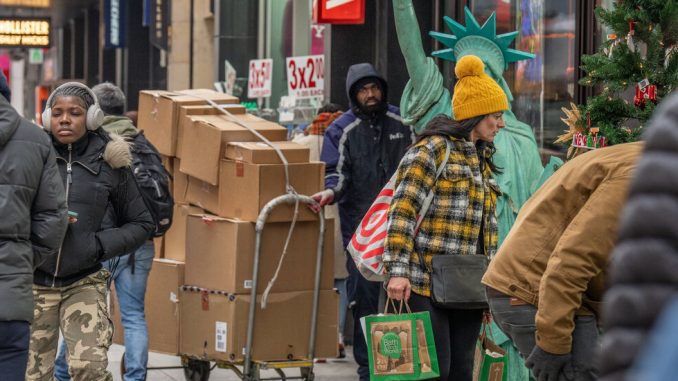
Why It Matters: The state of the labor market affects interest rate policy.
The labor market is closely watched by the Federal Reserve as it mulls its interest rate policy. A cooling labor market tends to fuel predictions that the Fed will not further increase rates, which have risen to a range of 5.25 to 5.5 percent from nearly zero in March 2022.
The labor market has been surprisingly resilient since the Fed started its rate increases in a campaign to tame inflation. But as the job market shows signs of cooling, so has consumer spending. Many companies told investors that in the most recent quarter customers were pulling back and spending less on products and more on services and experiences. The Fed’s preferred inflation measure confirmed that consumer spending slowed in October.
At the same time, investors are increasingly hopeful that the Fed is done raising rates. Jerome H. Powell, the chair of the Federal Reserve, recently suggested in a speech that the central bank would leave rates steady if data continued to point to a cooling economy. The 10-year U.S. Treasury yield fell on Tuesday, reaching its lowest point since September, as investors expected interest rates to fall in the future.
A reduction in job opportunities discourages the Fed from raising rates or keeping them high too long because such a trend often foreshadows a recession. “With this evidence coming in that the labor market is cooling substantially, I think it’s raising the chances that the Fed is done with the rate hikes,” said Julia Pollak, chief economist at ZipRecruiter.
Background: Unemployment and openings have reverted to earlier levels.
Though the labor market is slowing, it remains a healthy landscape for workers. The unemployment rate ticked up in October, to nearly 4 percent, which is in line with prepandemic levels.
Job openings reached a record of more than 12 million in March 2022 and have trended down since. The last time job openings hovered around nine million — where it is now — was in the spring of 2021.
There are still ample opportunities for workers. The rate of hiring remained steady in October despite the decline in openings.
One difference is that layoffs are lower than they were before the pandemic. That probably reflects companies’ decisions to reduce staffing by natural attrition rather than cuts.
“This is perhaps the biggest sign that we still have a strong economy and labor market,” said Sonu Varghese, a strategist at Carson Group, a financial advisory firm.
Though inflation has slowed significantly since the Fed started raising rates in March 2022, it remains above the central bank’s 2 percent target.
The Fed’s preferred inflation measure fell to 3 percent in October from a year earlier. But without including food and fuel prices, which are volatile and less sensitive to the Fed’s policy actions, the rate was 3.5 percent.
What’s next: The November jobs report comes on Friday.
The November jobs report will be released on Friday by the Labor Department. Economists forecast that the unemployment rate will stay around 4 percent, with a gain of about 180,000 jobs.
That report will be one of the last insights into the state of the labor market before the Fed’s next policy meeting on Dec. 12 and 13.


Be the first to comment